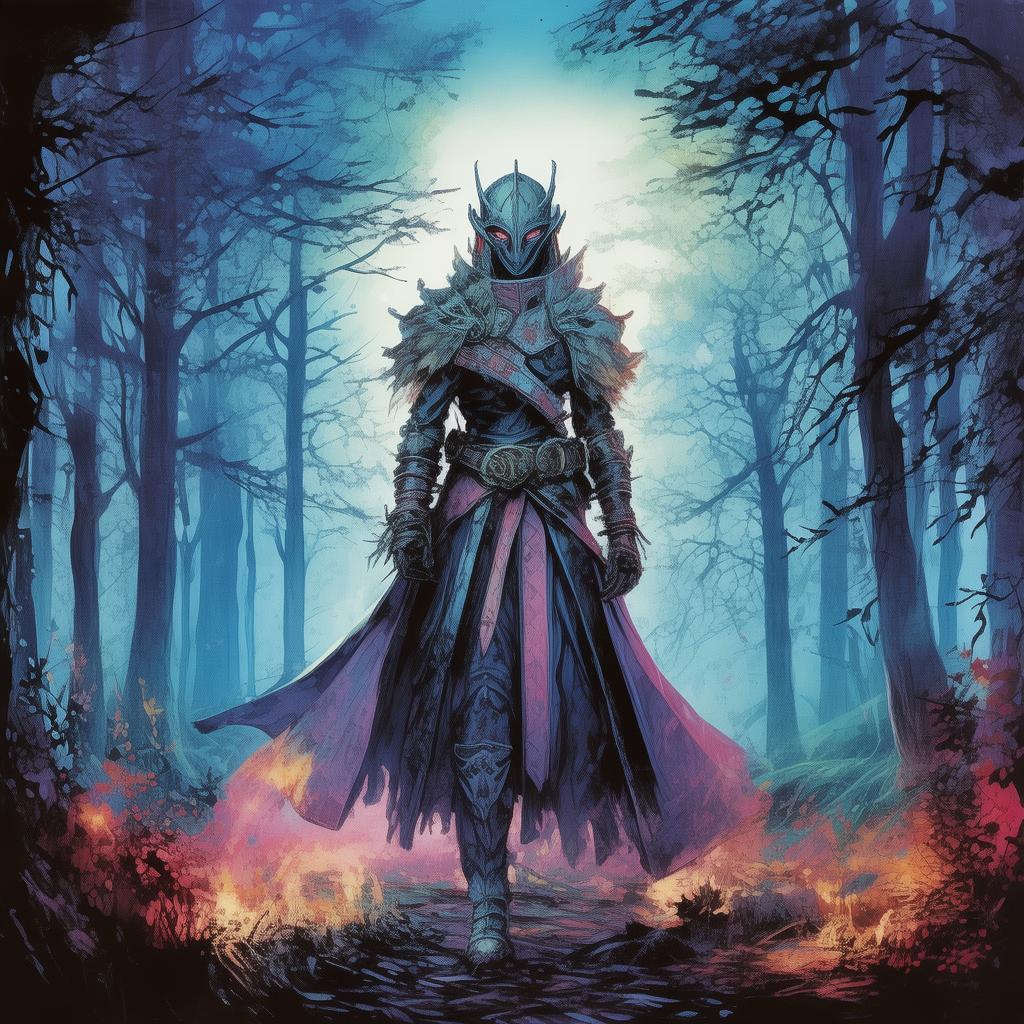The Saffron Queen's Vow: A Rebellion's Birth in the Ancient City
In the heart of the ancient city of Zara, where the sun baked the cobblestone streets to a fiery glow, there reigned a queen known for her radiant saffron robes and her iron-fisted rule. The Saffron Queen, a figurehead of the city, was a symbol of both prosperity and oppression. Her reign was a tapestry of splendor and sorrow, woven with threads of gold and blood.
Amara, the Saffron Queen, was not just a ruler but a deity to many. Her beauty was said to be as captivating as the saffron fields that stretched across the plains beyond the city walls. But beneath her regal facade lay a woman of deep passions and a heart heavy with the weight of her people's suffering.

The city's wealth was built on the backs of the poor, the power of the queen on the oppression of the masses. The elite lived in opulence, while the common folk toiled in squalor. The Saffron Queen's vow was a promise to herself and her people—a vow to change the course of their lives.
One summer, as the saffron fields burst into bloom, a whisper of discontent began to stir among the workers. The harvest was bountiful, but the reward was not shared. The queen's greed was as evident as the red stains on her robes, where the saffron dye had bled through.
Amara, in her solitude, watched the workers toil under the relentless sun. Her heart ached for their plight, and she knew she had to act. That night, under the moon's silver glow, she stood before her mirror, her reflection a portrait of the queen she was and the woman she aspired to be.
"I vow," she spoke aloud, her voice echoing through the chamber, "to restore justice to Zara. If I must be the one to break the chains that bind us, then so be it."
With that vow, Amara began to plan. She gathered the most trusted and loyal among her people, those who understood the depth of her vow and were willing to stand by her side. They were a motley crew of artisans, teachers, and farmers, each with a story of their own suffering at the hands of the elite.
The rebellion was not without its challenges. The queen's spies were everywhere, and whispers of the plot were as dangerous as the guards who patrolled the streets. Yet, the Saffron Queen's resolve was unwavering. She met with her allies in secret, their meetings a dance of strategy and hope.
The turning point came when the queen's own daughter, a young woman with a heart as fierce as her mother's, joined the rebellion. "Mother," she whispered, "if you are to be the queen of justice, then I, too, must be your queen."
With her daughter by her side, Amara felt a surge of strength. They would start with the children, the future of Zara. They would teach them of the queen's vow, of the struggle, and of the hope that lay within them.
The first act of rebellion was subtle, a secret meeting in the ruins of an old temple. The children, their faces alight with curiosity and courage, listened intently as the queen's daughter spoke of the world that could be. They were the seeds of change, the first to be sown in the garden of revolution.
As word of the rebellion spread, the city's people began to see the Saffron Queen in a new light. They saw not just a ruler, but a mother, a teacher, a leader. The streets that had once echoed with the sound of oppression were now filled with the murmur of freedom.
The queen's vow had become a clarion call, and the city responded. The artisans crafted weapons from the tools of their trade, the teachers taught the ways of resistance, and the farmers prepared the fields for the harvest that would feed the hungry and fund the revolution.
The Saffron Queen's Rebellion was a symphony of courage and despair, a tale of the human spirit's indomitable will. It was a fight not just for power, but for dignity, for the right to live without fear and want.
In the midst of the turmoil, the queen faced her greatest challenge. The elite, realizing the threat to their power, mobilized their forces. Amara stood at the forefront, her eyes alight with the fire of her vow. "For Zara!" she cried, and her people followed her into the fray.
The battle was fierce, the streets a bloodied canvas. The Saffron Queen fought with a ferocity that belied her gentle demeanor. She led her people with the same grace and determination that had once led them in times of peace.
In the end, it was not just the queen's resolve that won the day, but the collective will of her people. The elite were defeated, their power shattered, and the Saffron Queen's vow was fulfilled.
The ancient city of Zara was reborn, not as a place of oppression, but as a beacon of hope and justice. The Saffron Queen, now a symbol of freedom, stood upon the ruins of the old regime, her robes dyed with the blood of the fight, but her heart filled with the promise of a new dawn.
The Saffron Queen's Vow was a story of rebellion, of love, and of the enduring power of the human spirit. It was a tale that would be told for generations, a testament to the courage of those who dared to dream of a better world.
✨ Original Statement ✨
All articles published on this website (including but not limited to text, images, videos, and other content) are original or authorized for reposting and are protected by relevant laws. Without the explicit written permission of this website, no individual or organization may copy, modify, repost, or use the content for commercial purposes.
If you need to quote or cooperate, please contact this site for authorization. We reserve the right to pursue legal responsibility for any unauthorized use.
Hereby declared.









